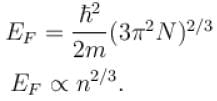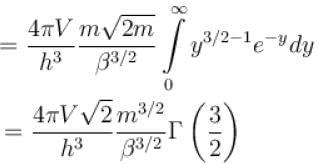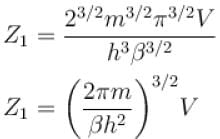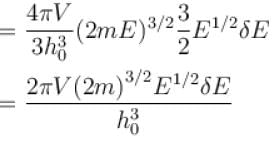Statistical Physics MCQ Level – 2 - IIT JAM MCQ
10 Questions MCQ Test - Statistical Physics MCQ Level – 2
If Z be the partition function and  then the average energy of the system is given by.
then the average energy of the system is given by.
Select one:
 then the average energy of the system is given by.
then the average energy of the system is given by.Select one:
For a Fermi gas of N particles in three dimension at T = 0K, the Fermi energy Ef is proportional to
Select one:
Select one:
Which of the following relations between the particle number density n and temperature T must hold good for a gas consisting of non-interacting particles to be described by quantum statistics?
Select one:
When an ideal quantum gas can be treated as an ideal classical gas?
Select one:
What is the partition function of a monoatomic gas contained in value V, at temperature T and pressure p
Select one:
Consider a one level system having energy  where V0 is a constant and symbols have usual meanings, the partition function for the system is.
where V0 is a constant and symbols have usual meanings, the partition function for the system is.
Select one:
The partition function of a single gas molecule is Zα. The partition function of N such non-interacting gas molecules is then given by
Select one:
The classical partition function Z gives the
Select one:
For a single particle of mass m enclosed in a volume V. the number of accessible microstate in energy range E to  is given by the (the phase space is divided by the rule
is given by the (the phase space is divided by the rule 
Select one:









 where V is volume and N is number of particles.
where V is volume and N is number of particles.
















 is limited by
is limited by 





 is
is













